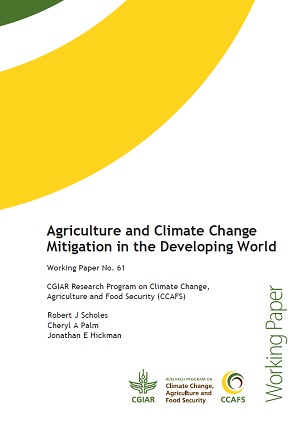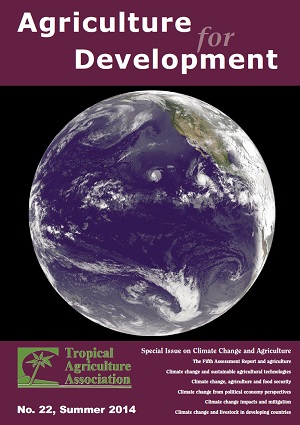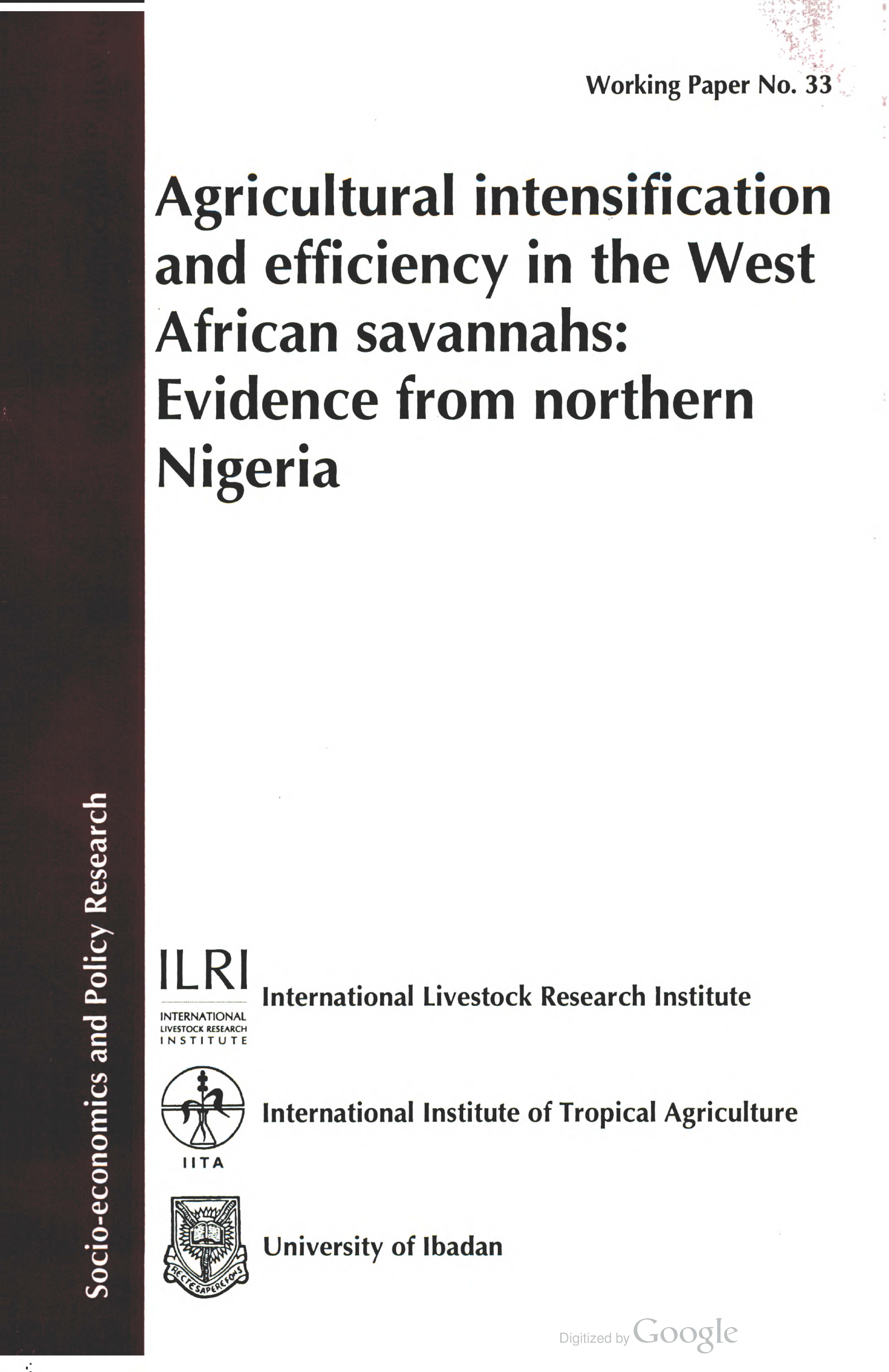Agriculture and climate change mitigation in the developing world
Agricultural activities in the developing world directly contribute about 4.23 GtCO2eq/y to the current anthropogenic forcing of the global climate, and indirectly a further approximately 3.93GtCO2eq/y through forest clearing and degradation. Together they constitute a quarter of the total global climate forcing from all sources. Many proven agricultural practices and policies can reduce this impact on the global climate without compromising food production, or reduce the climate impact per unit of agricultural production.
Agriculture for Development 22
Complete issue of Agriculture for Development 22.
Articles:
Pachauri R. Climate change and agriculture in the Fifth Assessment Report.
Beddington J, Warham E. Climate change and sustainable agricultural technologies.
Campbell B. Climate change, agriculture and food security: from local action to global agreements.
Naess LO. Climate change and agriculture: lessons from political economy perspectives.
Sims B. Climate change impacts and mitigation: a review of predictions and reality.
Agrobiodiversity conservation and use in Asia, Pacific and Oceania
The Asia, Pacific and Oceania (APO) region is the centre of diversity of many important species of crops, animals and livestock. Most of its resource-poor farmers depend on this agrobiodiversity for food security and livelihood. Agrobiodiversity in APO has served as the source of genetic materials that propelled the Green Revolution in the region. It has enabled continuous growth in productivity, allowing agriculture to cope with declining yield, emergence of pests and diseases and occurrence of abiotic stresses like drought and floods.
Agricultural land investments and water management in the office du Niger, Mali: options for improved water pricing
Large-scale agricultural land investments in Africa are often considered solely from the land perspective. Yet land, water and other natural resources are closely interlinked in agricultural production and in sustaining rural livelihoods. Such investments involving irrigation will potentially have implications for water availability and utilization by other users, making it imperative to regard water as an economic rather than a free good.
Addressing water-related health risks in agroecosystems
We acknowledge financial support to this research by ACIAR, DFID, ESPA, ESRC,NERC and the CGIAR Research Program on Agriculture for Nutrition and Health
Agro-climate tools for a new climate-smart agriculture
The way we produce food must adapt to a variable and changing climate. And key to achieving this is to improve the link between climate information and agricultural practices, especially those of smallholder farmers in developing countries. ‘Agro-climate tools’ do just that and some are introduced here.
An ecoregional approach to enhancing agricultural research in tropical America
An efficient sampling protocol for sagebrush/grassland monitoring
Rangeland scientists and quantitative ecologists have developed numerous methods and monitoring techniques that can be used for vegetation sampling (Barbour et al. 1987). The methods used to position samples (transects, quadrats, lines, and points) vary and can be classed as selective, capricious, systematic, or random. One of the prerequisites for valid statistical inference is that samples are taken randomly. A random sampling procedure implies that all elements or units of the population being studied have an equal chance of being represented in the sample.
An Overview of Dairy Cattle Models for Predicting Milk Production: Their Evolution, Evaluation, and Application for the Agricultural Model Intercomparison and Improvement Project (AgMIP) for Livestock.
The contemporary concern about anthropogenic release of greenhouse gas (GHG) into the
environment and the contribution of livestock to this phenomenon have sparked animal
scientists’ interest in predicting methane (CH4) emissions by ruminants. Focusing on milk
production, we address six basic nutrition models or feeding standards (mostly empirical
systems) and five complex nutrition models (mostly mechanistic systems), describe their key
characteristics, and highlight their similarities and differences. Four models were selected to










